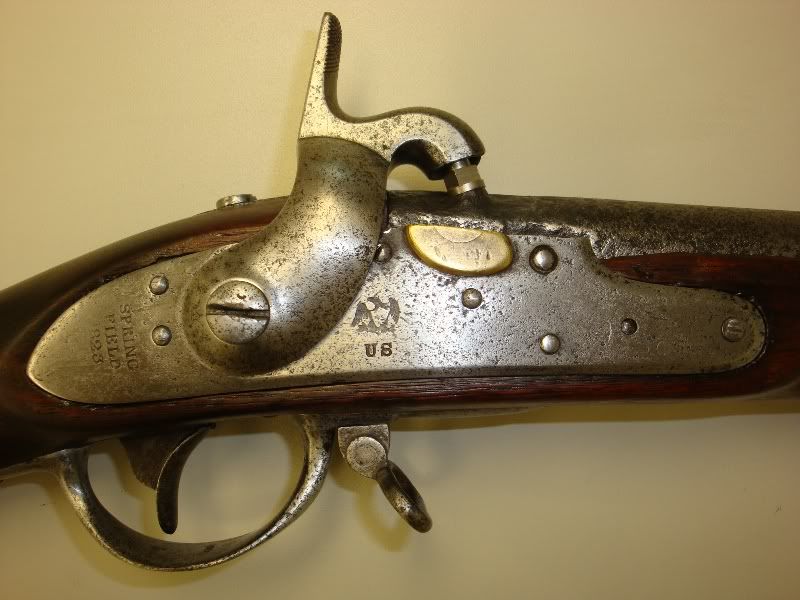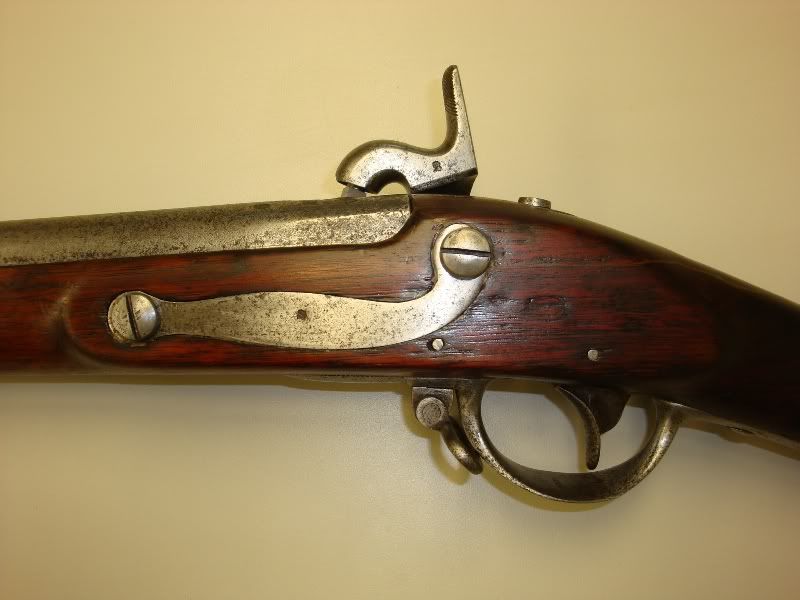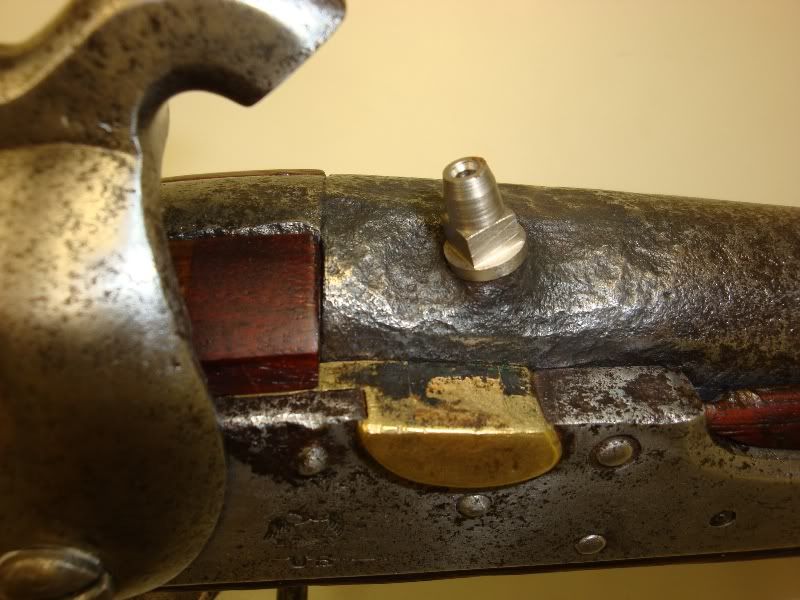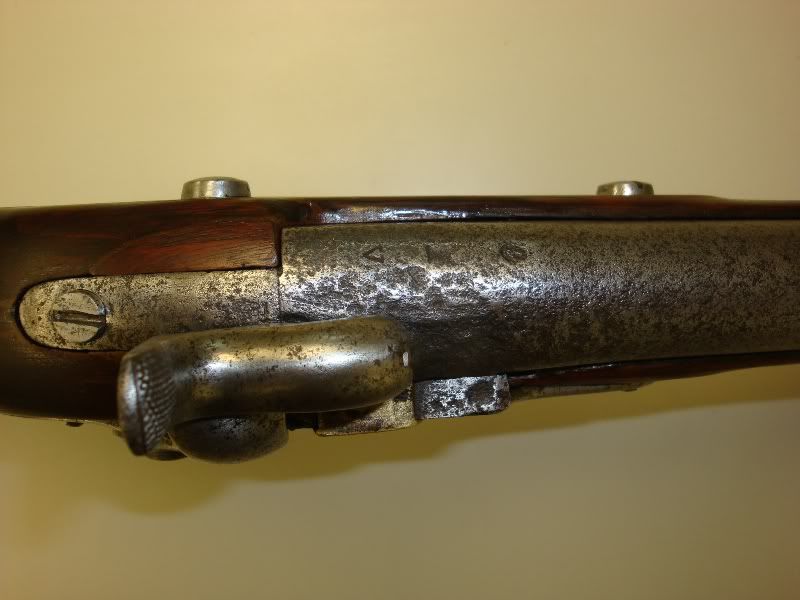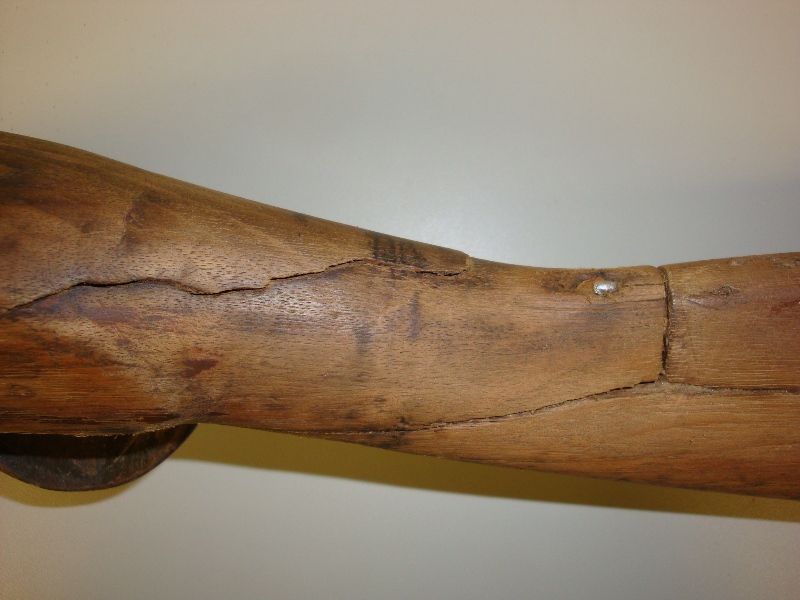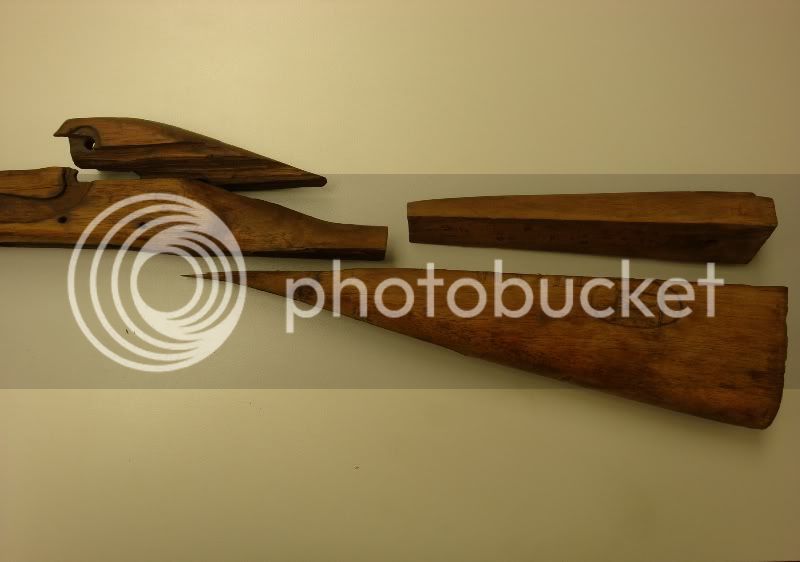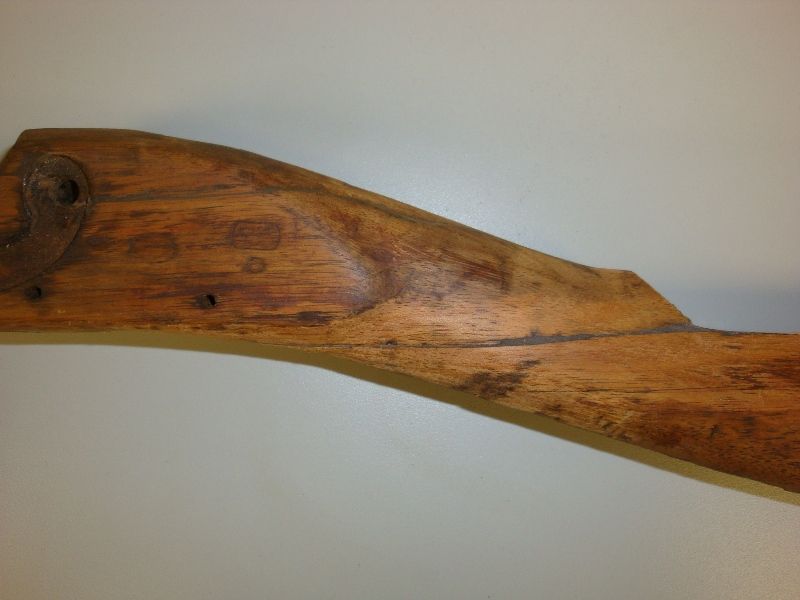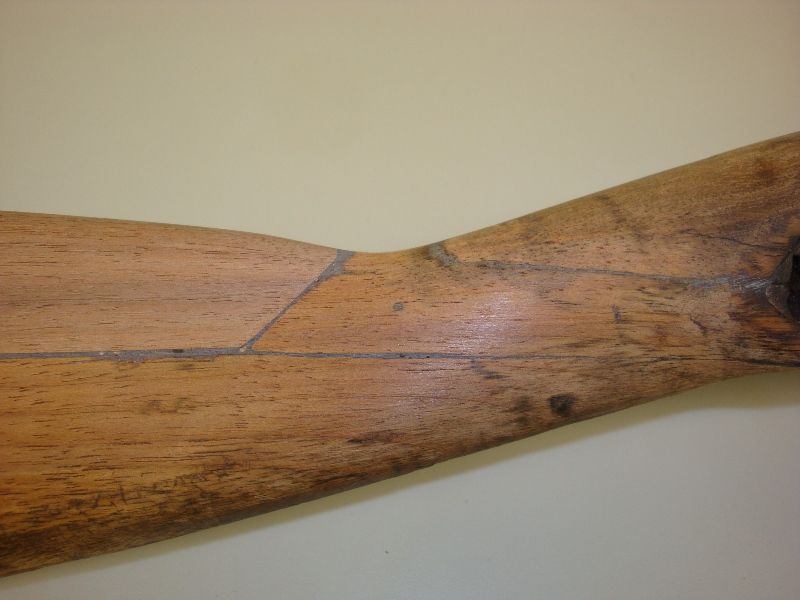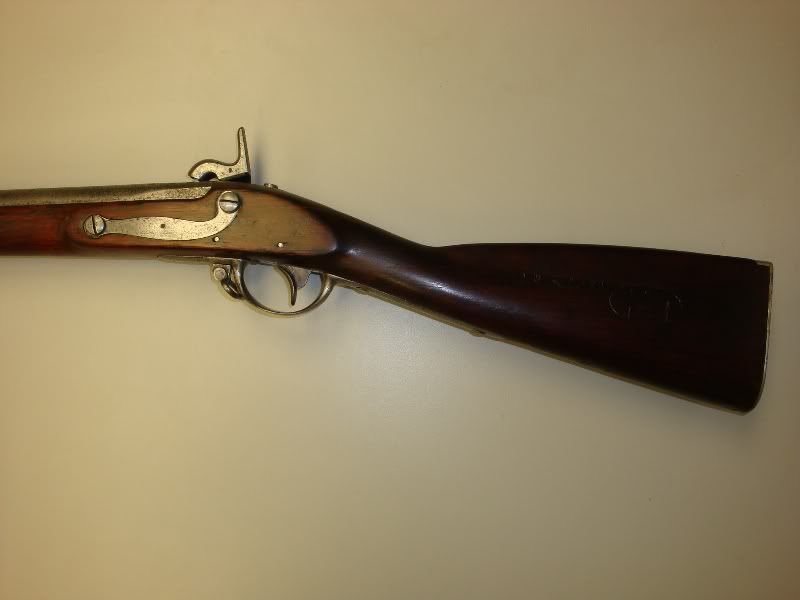Attached are photos of my M1816 Springfield made in 1823 that I brought back from the brink a couple of years ago. It was almost in relic condition with a broken stock that had previously been repaired (badly) ages ago. Considering the condition, my efforts wouldn’t do it any harm and brought it back to a useable state.
The good; the stock hadn’t been cut down and all the bands were present along with the original ram rod.
The bad; as stock as previously stated had been pretty severely broken and required a new comb to be fashioned. The lock was inoperable and required the tumbler and sear to be welded up and reshaped. The only parts needing total replacement were the nipple and buttstock screws.
Starting with the before:
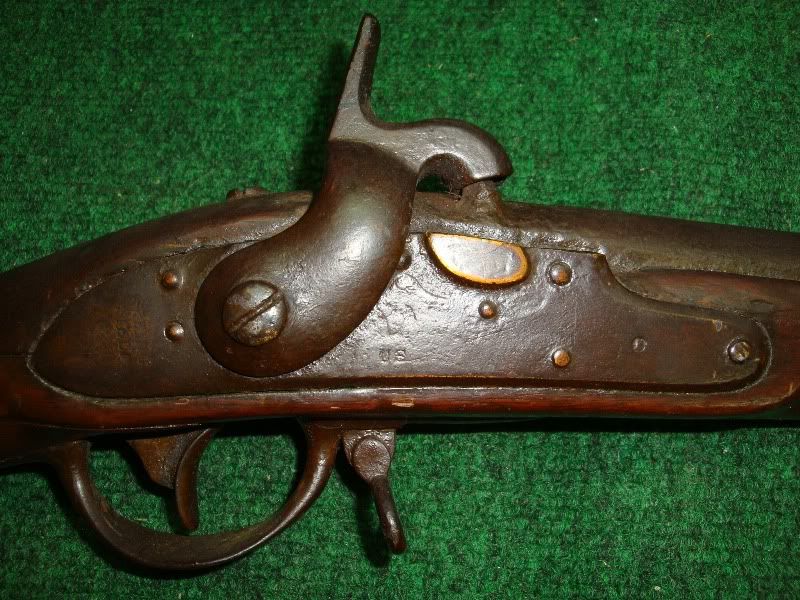
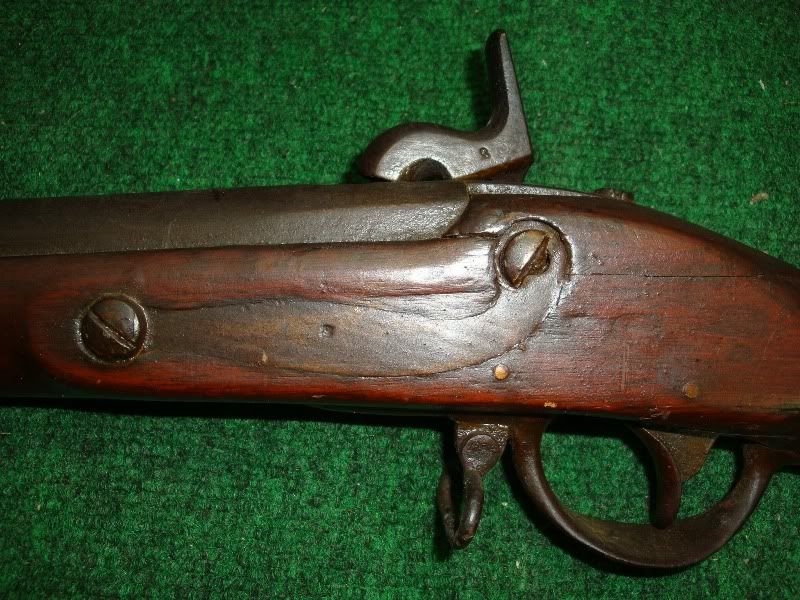
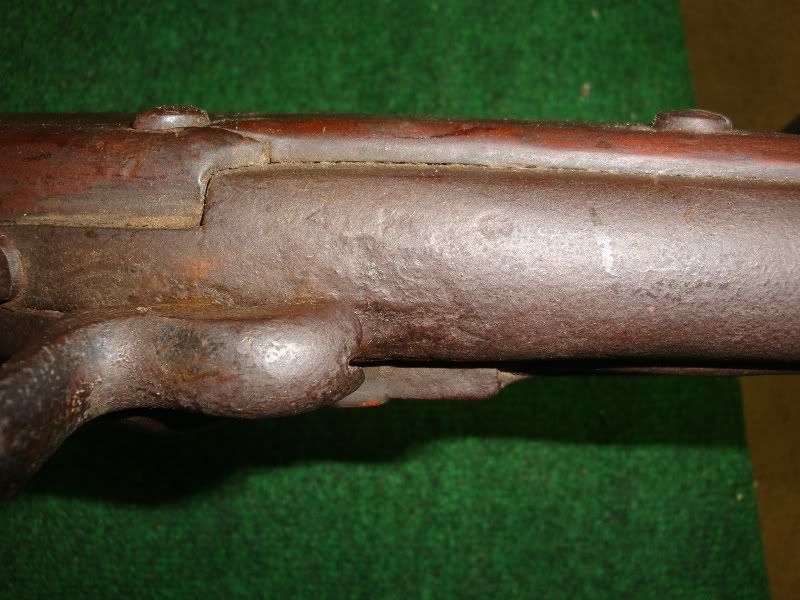
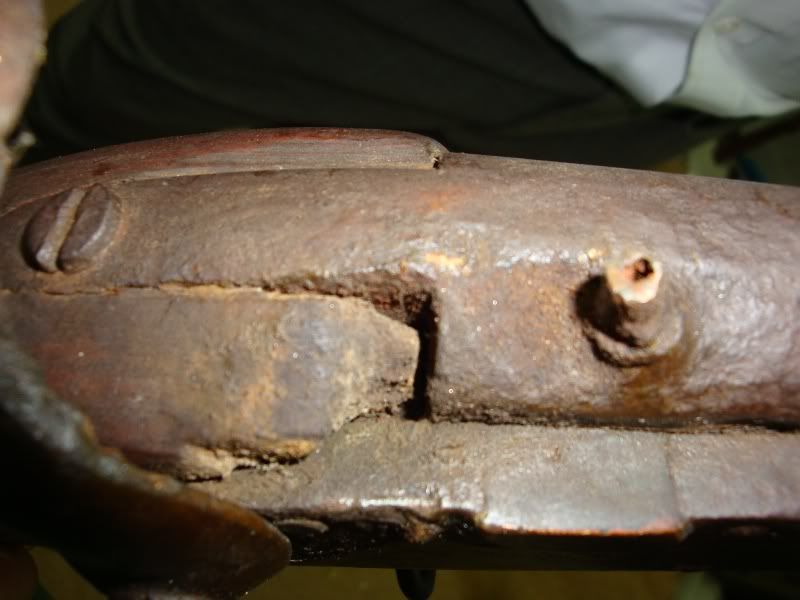
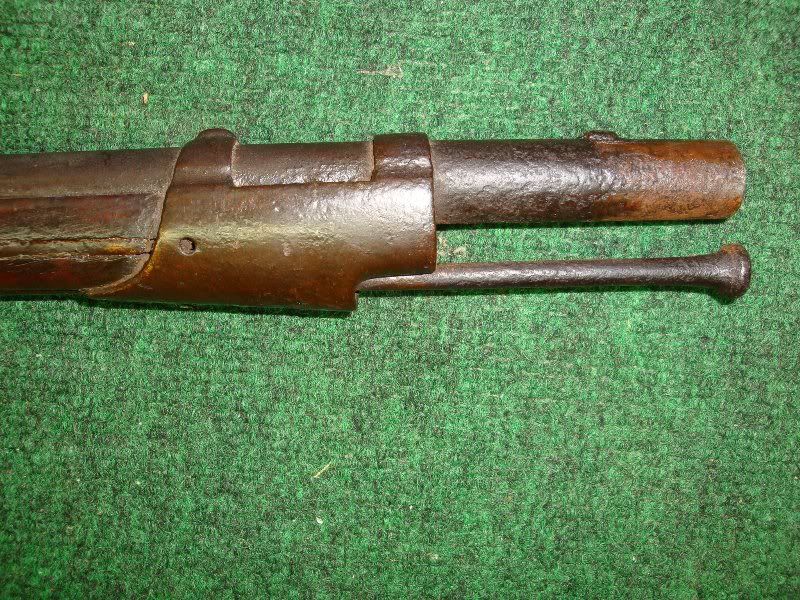
More to follow,
Wpns Man
The good; the stock hadn’t been cut down and all the bands were present along with the original ram rod.
The bad; as stock as previously stated had been pretty severely broken and required a new comb to be fashioned. The lock was inoperable and required the tumbler and sear to be welded up and reshaped. The only parts needing total replacement were the nipple and buttstock screws.
Starting with the before:





More to follow,
Wpns Man




